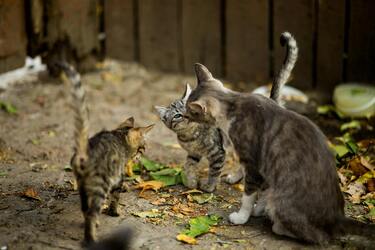Scientists have learned how cats communicate with each other

Scientists from the University of California, Davis, have discovered that microbes living in the anal glands of cats play a key role in shaping their unique odor.
The study, published in the journal Scientific Reports, found that each cat has its own microbial cocktail in its anal glands that produces hundreds of compounds. These compounds, which consist of aldehydes, alcohols, esters, and ketones, are key to allowing cats to communicate with each other, Newsweek writes.
Read also: Why lop-eared cats stand on two legs and sit in strange positions: the reasons are shocking
The authors of the study found that five genera of bacteria - Corynebacterium, Bacteroides, Proteus, Lactobacillus, and Streptococcus - dominate all cats, but each cat has an individual microbial composition. These differences were more pronounced between older and younger cats.
The exact reason for these different microbiomes is unknown, but it may be partly due to the cat's diet, health, and environment.
The researchers hope to find out exactly what role microbes play in creating these odors, and whether the animals themselves have any influence on which microbes are involved or whether it is a random process.
"This is really early work, and it suggests that 1 - microbes contribute to the production of these odors and 2 - there are probably many microbes involved," said Jonathan A. Eisen, co-author of the paper and professor of microbial ecology and evolution at the University of California, Davis.
"And if that's true, it seems almost guaranteed that different cats will produce different odors because they will certainly have different relative numbers of microbes doing so in their glands," he added.
Read also: Should cats have their ears pierced and wear earrings: experts' warnings
This study has important implications for understanding the social behavior of cats. Smell plays a key role in how cats communicate with each other, marking their territory, attracting mates, and scaring away enemies.
"Personally, I am most interested in the role of microbes in odor production and especially in social communication in the entire feline group, including all wild cats," Eisen said.
Earlier, experts named the parts of the cat's body that should not be touched.
If you want to get the latest news about the war and events in Ukraine, subscribe to our Telegram channel!
